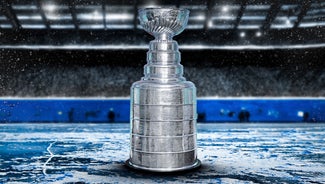
Colorado Avalanche: A Guide to Tanking
The Colorado Avalanche certainly want to focus on playing well throughout the rest of year, but their focus should be on tanking.
Let’s be honest, the Colorado Avalanche don’t need any help tanking. They will likely finish at the bottom of the standings regardless of whether or they not they try to tank.
Nonetheless, they are some other facets to tanking that they also need to consider. The Toronto Maple Leafs of the past two seasons are a good example for the Avs to follow.
Mike Babcock knew his team wasn’t going to make the playoffs. Lou Lamoriello also knew that there were some other important steps for his team to take in order to get back to relevancy.
Thus, Lamoriello started the fire sale, Babcock started coaching the next crop of talent, and the rebuild began.
It began with trading most of the core that had failed to deliver. The Maple Leafs held onto two players from their previous core – Nazem Kadri and James van Riemsdyk – and dealt every other valuable piece.
More From Mile High Sticking: Nikita Zadorov Showing Good Development for Avs
This season, the Maple Leafs are fighting for a playoff spot, and last year they were the worst team in the NHL. That is something that the Avs have hope for next year if they are able to pull the right moves at the deadline and during the offseason.
What Would the Equivalent Be for the Avs?
I’ve already detailed what building the new core would look like for the Avs, and if you want to read that story, then no look no further:
The new core needs to be built around Nathan MacKinnon and Mikko Rantanen. Joe Sakic also needs to hold onto any top six wingers currently in the organization, which means Gabe Landeskog needs to stay.
Finally, Avs management also needs to take advantage of their depth at the center position, and go out and make a trade for a top-pairing defenseman.
That basically means sayonara Matt Duchene. However, there are some other players that need to be considered for trade in the interest of tanking.
Tyson Barrie Might Need to Go
Tyson Barrie scores a bunch of points from the blueline, but man is he a liability defensively. Furthermore, he is a highly coveted puck-moving defenseman, and could fetch a nice return in the top six.
The Avs also have some nice puck-moving prospects coming up in their ranks in Nicolas Meloche and Chris Bigras.
Meloche seems to have the higher upside of the two, but Chris Bigras is a reliable two-way defender as well.
More From Mile High Sticking: What the Avs Should Focus on to Finish the Season
Meloche is a right-handed defenseman too, and could fill the hole that Barrie will leave within a couple years.
It’s obvious that the Avalanche have given up on this season. Semyon Varlamov is going to have season-ending surgery for his groin, and Jared Bednar is just making sure that his team is establishing good habits, winning does not seem to be a necessity.
With that in mind, it might be time to give some of the prospects in the AHL time with the big club.
The Trade Deadline May Make Room for Prospects
We might not see any call-ups until after the trade deadline when some roster spots are created by the departure of other players. However, I believe it’s time to give our AHL prospects some time in the NHL.
Many disagree with this plan because it means that said players would be part of a losing culture. However, where is the harm in calling up players from an AHL club that can’t win either?
More From Mile High Sticking: Analyzing the Avs’ Needs in the 2017 NHL Draft
There are three players that need to get opportunities before the NHL season ends:
A.J. Greer has seen a bit of time in the NHL already this season, but he’s ready for more. He’s second on the San Antonio Rampage in points this season, and he is one of the top rookies in the AHL as well.
I’ve already detailed why Siemens needs a shot in this post. However, for the sake of his development and trade value, Siemens needs a call-up sooner rather than later.
He’s on a one-year contract for a reason. And, could he really be worse than Cody Goloubef? I think not.
Finally, I’d really love to see J.T. Compher given a shot this season.
He paid his dues in the NCAA, and he’s played really well for the Rampage so far this season.
He was unfortunately injured for the beginning of the season, but he’s been a very responsible center down in San Antonio. Regardless of whether he gets a shot this season, expect him to start next year in the NHL.
Conclusion
Tanking is not only about losing; tanking is about losing with a purpose. What I mean is, the Avs need to make trades for the future, acquire draft picks, and find prospects that will be future pieces of the core.
They also need to give chances to prospects within their system so they can start to figure out if said prospects will be a good fit for next year’s NHL roster.
And, in the case of Duncan Siemens, it’s in the best interest of his development to play the majority of the rest of the season with the Avs.
To be clear, the Avs are already tanking, but they need to take the final steps toward making that tanking worthwhile.
Those final steps include the trading of failed core players in the interest of the future, and the development of prospects within their system in the interest of constructing next season’s roster.
It’s not easy to watch, but the Colorado Avalanche will ultimately benefit from this guide to tanking.
More from Mile High Sticking
This article originally appeared on







































































































































